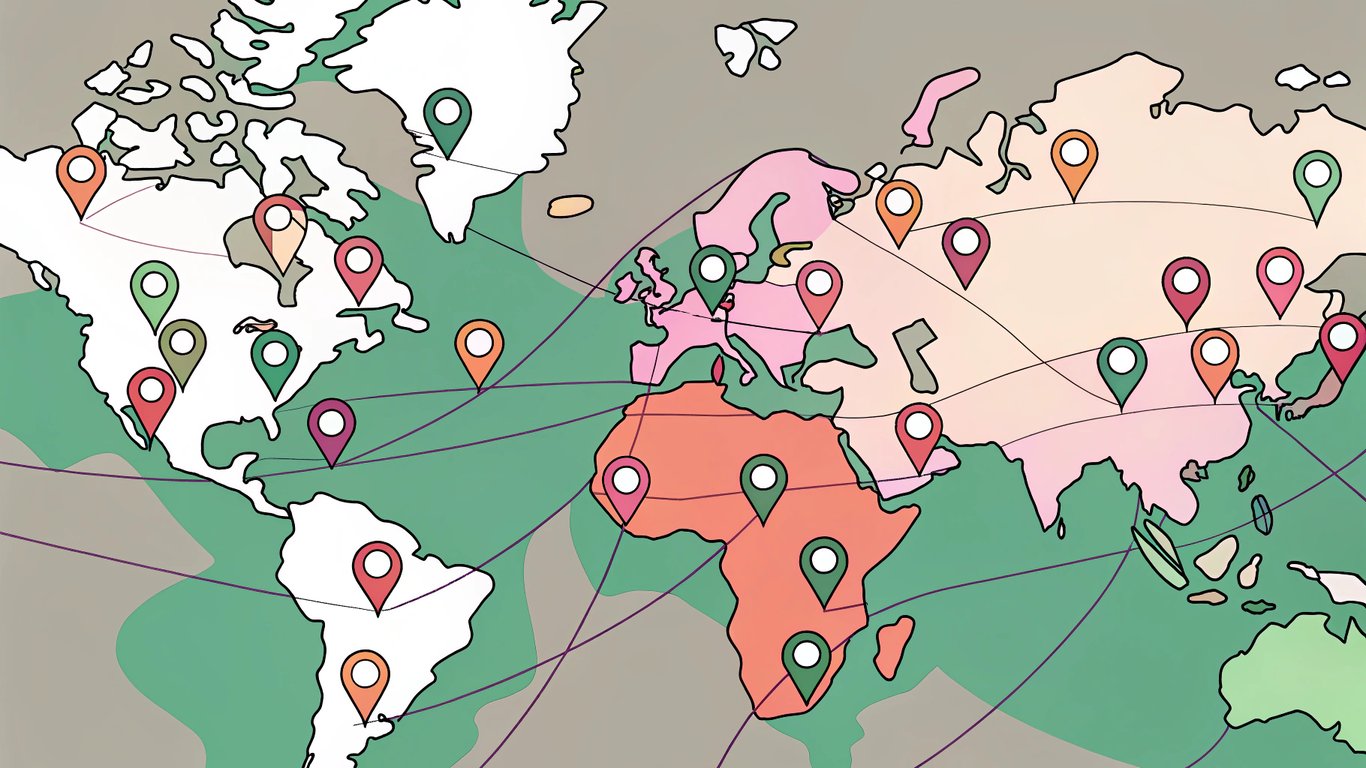Blogging in 2025 looks nothing like it did five years ago. The digital landscape has shifted dramatically, and traditional content creation methods simply can't keep up with the demands of modern audiences and search algorithms.
I've been working with content creators for over a decade, and I've watched countless blogs struggle to maintain relevance using outdated strategies. The ones that thrive today have embraced a fundamental truth: successful blogging strategies now require the perfect marriage of artificial intelligence and deep audience understanding.
The Current State of Blogging in 2025

Market saturation has reached unprecedented levels. There are over 600 million blogs competing for attention across the internet, making it harder than ever to stand out. Reader behaviors have evolved too - people now consume content across multiple platforms, expect personalized experiences, and have shorter attention spans.
But here's what's interesting: while competition has increased, the tools available to content creators have become incredibly sophisticated. AI for blogging has transformed from a novelty into a necessity for sustainable growth.
Why AI + Audience Intelligence = Blogging Success
The magic happens when you combine AI's processing power with genuine audience insights. AI can analyze massive datasets, identify patterns, and predict trends faster than any human could. Meanwhile, audience intelligence provides the emotional context and human understanding that AI still can't fully grasp.
This combination allows you to create content that's both data-driven and emotionally resonant. You're not just guessing what your audience wants - you're using intelligent systems to understand their needs while maintaining the human touch that builds real connections.

Foundation: Understanding Your Audience Through Data-Driven Intelligence
Before you can create compelling content, you need to understand who you're creating it for. Modern audience research goes far beyond basic demographics - it's about understanding the psychology, behaviors, and motivations that drive your readers' decisions.
Advanced Audience Research Techniques for 2025
Today's audience research focuses on psychographics and behavioral patterns rather than just age and location. You need to understand what keeps your audience awake at night, what solutions they're actively seeking, and how they prefer to consume information.
- Social media listening to understand conversations and pain points
- Comment analysis across your existing content and competitors'
- Survey data that reveals motivations and preferences
- Website behavior analysis showing content consumption patterns
- Search query analysis to understand information-seeking behavior
AI-Powered Audience Analysis Tools and Methods
AI tools can process audience data at scale, identifying patterns that would take humans weeks to discover. Social listening platforms use natural language processing to analyze sentiment and identify trending topics within your niche.

Predictive audience modeling takes this further by forecasting what topics will resonate with your audience before they even know they're interested. These tools analyze historical engagement data, seasonal trends, and emerging conversations to predict future content opportunities.
Creating Dynamic Audience Personas
Static personas are dead. Your audience evolves constantly, and your understanding of them should too. Dynamic personas update based on real-time data and feedback loops, ensuring your content strategy stays aligned with changing audience needs.
These living documents incorporate behavioral data, engagement metrics, and feedback to create a more accurate picture of your audience. They help you spot shifts in interests, emerging pain points, and new opportunities for content creation.
AI Workflow Implementation: Building Your Intelligent Content System
Creating an AI-powered content workflow isn't about replacing human creativity - it's about amplifying it. The goal is to automate repetitive tasks while preserving the strategic thinking and authentic voice that makes your content unique.

Essential AI Tools for Modern Bloggers
The AI tool landscape changes rapidly, but certain categories remain essential for effective AI content creation strategies. Content ideation tools help generate topic ideas based on trending keywords and audience interests. Writing assistants can help with drafting, editing, and optimization.
| Tool Category | Primary Function | Best Use Case |
|---|---|---|
| Content Ideation | Topic generation and trend analysis | Finding fresh angles on popular topics |
| Writing Assistance | Drafting and editing support | Overcoming writer's block and improving clarity |
| SEO Optimization | Keyword research and content optimization | Improving search visibility and rankings |
| Analytics & Insights | Performance tracking and audience analysis | Understanding what content resonates |
Creating Your AI Content Workflow
An effective AI workflow integrates seamlessly with your existing content creation process. Start with research and ideation, where AI can analyze trending topics and suggest content angles. Move to drafting, where AI assists with structure and initial content creation.
The editing phase benefits from AI-powered grammar checking, readability analysis, and SEO optimization. Finally, distribution and promotion can be enhanced with AI-driven social media scheduling and audience targeting.

Maintaining Human Touch in AI-Generated Content
The biggest mistake I see bloggers make is letting AI completely take over their voice. Your personal experiences, opinions, and unique perspective are what differentiate your content from the thousands of other articles on similar topics.
Use AI as a starting point, not an endpoint. Let it help with research, structure, and initial drafts, but always inject your own insights, examples, and personality. Your audience connects with you, not with an algorithm.
Strategic Topic Selection: The Science of Audience-Driven Content Planning
Choosing the right topics is probably the most critical decision in your content strategy. Get this wrong, and even the best writing won't save you. Get it right, and mediocre execution can still drive significant results.
The Topic Selection Framework
Effective topic selection balances three key factors: audience demand, business alignment, and competitive opportunity. Audience demand ensures people actually want to read your content. Business alignment ensures your content supports your goals. Competitive opportunity ensures you can actually rank and get noticed.
- High audience interest with low competition
- Topics that support your business objectives
- Content gaps in your existing library
- Seasonal opportunities and trending discussions
- Questions your audience frequently asks
Balancing Evergreen and Trending Content
Sustainable blogging strategies require a mix of evergreen content that drives consistent traffic over time and trending content that captures immediate attention. The ideal ratio depends on your goals, but most successful blogs aim for about 70% evergreen and 30% trending content.
Evergreen content forms the foundation of your traffic and authority. These pieces continue attracting readers months or years after publication. Trending content helps you stay relevant and can drive significant short-term traffic spikes.
Content Cluster Strategy and Topic Authority
Building topical authority requires more than just publishing random articles in your niche. You need to create interconnected content clusters that demonstrate comprehensive expertise on specific topics.
Start with pillar pages that cover broad topics comprehensively, then create supporting articles that dive deep into specific aspects. Link these pieces together strategically to show search engines and readers that you're a trusted authority on the subject.
Advanced Blogging Strategies for Sustainable Growth
Once you've mastered the basics of AI-powered content creation and audience-driven topic selection, it's time to implement advanced strategies that separate successful blogs from the rest.
Multi-Channel Content Distribution Strategy
Your blog shouldn't exist in isolation. The most successful content creators repurpose their blog content across multiple channels, maximizing reach and engagement. A single blog post can become a podcast episode, social media series, email newsletter, and video content.
This approach doesn't just increase visibility - it also reinforces your message across different learning styles and consumption preferences. Some people prefer reading, others want to listen, and many learn best through visual content.
AI-Enhanced SEO and Content Optimization
Modern SEO goes beyond keyword stuffing and meta descriptions. AI can help you understand search intent, optimize for semantic search, and identify content gaps that your competitors are missing. For a comprehensive approach, check out our complete SEO optimization guide.
Use AI tools to analyze top-ranking content in your niche, identify common themes and structures, and find opportunities to create more comprehensive or unique content. The goal isn't to copy what's working - it's to understand why it works and do it better.
Building Community Through Interactive Content
Engagement is the lifeblood of sustainable blog growth. Interactive content - polls, quizzes, comment discussions, and user-generated content - transforms passive readers into active community members.
This community aspect becomes increasingly important as AI-generated content floods the internet. People crave authentic human connection and genuine interaction, which gives community-focused blogs a significant competitive advantage.
Implementation Roadmap: From Strategy to Execution
Having a strategy is one thing - implementing it successfully is another. Most bloggers fail not because their strategy is wrong, but because they try to do everything at once and get overwhelmed.
30-60-90 Day Implementation Plan
Days 1-30: Focus on audience research and tool setup. Conduct comprehensive audience analysis, set up your AI tools, and create your first dynamic personas. Don't worry about content creation yet - foundation first.
Days 31-60: Begin implementing your AI workflow with a small batch of content. Create 4-6 pieces using your new process, focusing on quality over quantity. Measure performance and refine your approach.
Days 61-90: Scale your content production and optimize based on early results. This is when you'll start seeing patterns in what works and what doesn't, allowing you to refine your blogging strategies for maximum impact.
Setting Up Your Tech Stack and Workflows
Your technology stack should support your workflow, not complicate it. Start with essential tools and add complexity gradually. Most successful bloggers use a content management system, analytics platform, AI writing assistant, and social media scheduler as their core stack.
Integration between tools matters more than individual features. Look for platforms that work well together and automate repetitive tasks. The goal is to spend more time on strategy and creativity, less time on administrative work.
Common Pitfalls and How to Avoid Them
The biggest mistake I see is over-relying on AI without maintaining editorial oversight. AI is a powerful tool, but it can't replace human judgment, creativity, and authentic voice. Always review and refine AI-generated content before publishing.
Another common pitfall is ignoring audience feedback in favor of data. While analytics are important, direct feedback from your readers often reveals insights that data alone can't provide. Balance quantitative analysis with qualitative feedback.
Future-Proofing Your Blog: Staying Ahead in 2025 and Beyond
The digital landscape will continue evolving rapidly. The blogging strategies that work today might need adjustment tomorrow. Building adaptable systems and maintaining a learning mindset are your best defenses against obsolescence.
Emerging AI Technologies for Content Creation
AI capabilities are advancing quickly. We're seeing improvements in natural language generation, better understanding of context and nuance, and more sophisticated content optimization. Stay informed about these developments, but don't chase every new tool that emerges.
Focus on mastering the fundamentals first. Advanced AI features are only valuable if you have solid audience understanding and content strategy foundations in place.
Building Adaptable Content Systems
Create systems that can evolve with changing technologies and audience preferences. This means building processes around principles rather than specific tools, maintaining flexibility in your content formats, and regularly reviewing and updating your approach.
The most successful bloggers I know treat their content strategy as a living document that gets updated quarterly based on performance data, audience feedback, and industry changes.
Action Steps and Next Phase Planning
Start with audience research if you haven't done comprehensive analysis recently. Your understanding of your audience should drive every other decision in your content strategy. Then gradually implement AI tools and workflows, measuring results and adjusting as needed.
Remember that sustainable growth takes time. Focus on building systems and processes that will serve you well over months and years, not just the next few weeks. The combination of AI efficiency and genuine audience understanding creates a powerful foundation for long-term blogging success.



